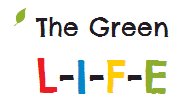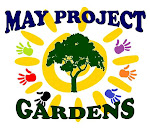
Here at May Project gardens we have come to the conclusion that soil is one of the most important elements in organic food growing, after all it is from the soil where plants get most of their nutrients. It is also an anchoring against wind, water flow and animals which may otherwise damage or even destroy the plant.It is important that we realise that soil is a living organism and like all living organisms it needs constant nurturing. There is a very interesting and informative documentary called "Dirt! The Movie" which looks at man's relationship with soil, or as they describe it "the earth's living skin". I urge you to take the time to watch this very eye opening documentary. The online link is Here at May Project Gardens we have come to the conclusion that soil is one of the most important elements in any food growing en-devour. After all it is form the soil where the plants gets most of their nutrients, it is also the soil which helps them stand strong by providing an anchoring against wind, water flow, and animals which may otherwise destroy or damage the plant. It is very important that when growing in soil that you become aware of the fact that it is a living organisms, and like all living organisms it needs constant nurturing. There is a very interesting and informative documentary which looks at the relationships between man and soil or as they describe it "the earths' living skin", I urge you to take the time out to watch this very eye opening documentary called "Dirt! The Movie". Here is the link where you can watch online.
After two seasons of constantly taking the valuable nutrients out of the soil trough the food we have been growing we have now started rebuilding it. As I mentioned in the previous post we acquired two tonnes of soil improver, this consisted of quite a lot of untreated wood ash, woodland leaves and twigs matter, and other organic material. We do make our own compost but we cannot make it in the quantity we need. The picture on the top right shows some of our home made compost. From the soil samples we collected from the site it was revealed that our soil was low in both nitrogen and phosphorus hence the soil improver (Si). We have now added Si to most of the grow beds and covered them with newspaper after saturating them with liquid comfrey (made on site).

One of the outside beds

The inside beds
Two reasons why we covered the beds:
1. It will help hold in moisture and stop the soil from being washed or blown away.
2. It will deter the wild animals, foxes, birds, etc., from digging and defecating in the beds.

Fox problem on bare soil
The reason we used newspaper is mainly because it is a very easily sourced material and can be collected in large quantities, well here in London anyway, and it does not need to be removed when planting as it is decomposable and a good source of carbon. At first we were worried about the damage the it may cause to the soil because of the ink but according to experts several years ago it was advised not to use newspaper in the garden because of the high toxicity of the ink used, however now things have changed quite dramatically in the way newspapers are produced and the ink is now a lot less toxic giving us gardeners a new abundant supply of composting and mulching material. We plan on adding more mulch material to the beds to help balance out the carbon. Green-ney materials like grass cuttings are high in nitrogen and such materials will be added later on in the season.
Indicator Plants
Permaculture requires a vast amount of observation. We conducted a survey of the site and collected soil samples which revealed heavy CLAY soil with some sand, and using a pH kit we recorded pH levels ranging 7 to 7.5 suggesting neutral/alkaline soil. We also observed some indicator plants growing on the site. Indicator plants are simply plants which give a good idea of conditions of the soil on a site. At May Project the indicator plants which we were able to identify were chickweed, stinging nettle, dandelion, plantain, buttercup and thistle. Dandelion, plantain and stinging nettle all indicate acidic soil pH range 5.5 - 6.5 which is a bit puzzling, however thistle indicates a slight alkaline soil so we are not dwelling to much on this contradiction. Other indicator plants like chickweed and buttercup lets us that the site was, at some point cultivated/tilled. Most of these indicator plants tell us that the soil beneath is clay, so that much we can agree on.

Indicators: Nettles (left) and Buttercups (right)
I thought I will leave you with one last point, wild food. You would think that you may need to go foraging in the woods for wild food but wild food can also be collected from as close as the back garden. Chickweed, dandelion, and stinging nettle are all plants which grow wild in the average back garden and are not only very edible but also bursting with valuable nutrients and can also help boost the immune system. So the next time you fancy a quick snack pop outside and grab a handful of dandelion or chickweed or nettles (young leaves are best) and enjoy. Be careful when harvesting nettles we all know how painful that can be, just bash them around a bit and the sting should disappear.

A small cluster of Chickweed






